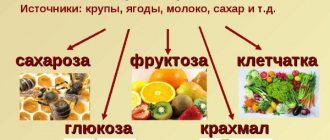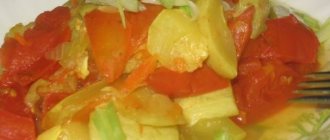Vegetables on a keto diet should be low-carb, but which ones fall into this category? To determine this, follow a simple rule.
- Vegetables growing above ground contain fewer carbohydrates. They can be consumed in large quantities.
- There are more of them in vegetables whose fruits are underground. Such vegetables should be included in the diet carefully and consumed in small portions (especially potatoes).
This rule, like any other, is not universal and has a number of exceptions. Let's look at more specific examples and situations.
How many calories are in cucumbers and tomatoes?
It is worth remembering right away that these vegetables belong to the group of those that have negative calorie content. Cucumbers and tomatoes are, by and large, the leaders in this list, since they not only by “weight” are kept within the limits of 30 kcal per hundred grams, but also do not exceed 20 kcal for the same volume. This allows you not to be afraid to snack on such products even before bed, if you are completely unbearable to sit on kefir alone, drunk at eight o’clock.
True, such impunity is determined not only by the calorie content of cucumbers and tomatoes, but also by their effect on the body. If the indicator itself - 14 kcal and 19 kcal for each - still carries some kind of “weight”, then the work of these same calories significantly covers their already low value.
Despite the fact that cucumbers contain as much as 78% carbohydrates, and this may at first scare someone who is thinking about the energy value of foods for the first time, a much more significant point is the proportion of water in this vegetable. It is precisely this that is decisive: as much as 95%. But, of course, it is not comparable to the water that flows through pipes, given the impressive list of chemical elements: there are many vitamins, among which stand out A, C, B9, K, PP, and a huge set of microelements with the leading aluminum, as well as fluorine , copper, iodine, chlorine, phosphorus, potassium, magnesium and calcium.
In addition, do not forget about fiber, which perfectly absorbs harmful substances and removes them from the intestines. Due to its chemical composition, cucumber is indispensable for kidney and liver problems. But the most valuable thing, besides the calorie content, in a cucumber - a tomato does not have such properties, but is distinguished by other qualities - it is tartronic acid.
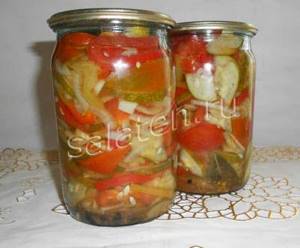
It is especially appreciated by those losing weight, because it prevents the formation of fat deposits in problem areas. And the feeling of fullness that, in principle, a very light vegetable gives, is an excellent bonus. That is why, even if a salad with cucumbers, tomatoes and sour cream had a high calorie content, it could be consumed without worrying about your figure: in tandem, these two products fill you up instantly, and therefore you won’t be able to eat a lot and eventually gain kilograms.
As for the second component of the already mentioned dish - tomato, its “weight” is a little more carbohydrates - already 84%, but there is still a lot of water in it: 93%, and therefore there is no need to be scared, like a cucumber. In terms of vitamin composition, it is close to cucumber, also containing a significant proportion of vitamins K, C, B9 and A, as well as beta-carotene and biotin. Among the mineral substances, the picture is slightly different: in addition to potassium, sodium, magnesium, calcium, chlorine, phosphorus and copper common with cucumber, rubidium and boron are present here. In addition, just like its green pimply counterpart is distinguished by tartronic acid, the tomato boasts high antioxidant properties and the ability to break down fats due to the lycopene it contains. For this reason, tomato is often included in diet and diabetic menus, as it can lower blood sugar and cholesterol levels.
As a result, the calorie content of a salad of cucumbers, tomatoes and sour cream, even with the relative fat content and apparent negativity of the latter, is, by and large, more beneficial than harmful. Moreover, it is better to cook it with low-fat sour cream, and not with vegetable oil, to achieve maximum usefulness and ease. In addition, the sour cream variation is suitable for a separate diet, where only carbohydrates are present, but the butter version is suitable for a protein-carbohydrate diet.
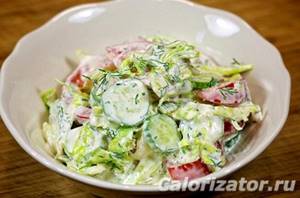
In this case, the calorie content of cucumbers and tomatoes with onions and sour cream will barely reach 30 kcal per hundred grams. And with oil it will show about 95 kcal per hundred grams. The difference, it should be noted, is significant, although not very critical.
[custom_ads_shortcode1]
Calorie content of cucumbers and tomatoes
Man began to eat cucumbers more than six thousand years ago. The cucumber came to Europe from the subtropical and tropical regions of China and India, where this green vegetable still grows widely under completely natural conditions. 95% of a cucumber consists of water, the rest is proteins, fats and carbohydrates.
We invite you to familiarize yourself with Tomatoes the black heart of delirium
Of course, we are now talking about proteins of plant origin, which are very well absorbed by the human body, thanks to special enzymes that this simple vegetable also contains. And, by the way, it is precisely because of these enzymes that a salad of cucumbers and tomatoes (which is quite low in calories) is useful to combine with meat dishes.
Fresh cucumber is indispensable in the diet of people with diseases of the cardiovascular system, kidneys, liver, gout, and obesity. The fiber in cucumber perfectly stimulates the intestines; in terms of the amount of alkaline salts, this vegetable is second only to black radish. These salts actively neutralize various acidic compounds that disrupt metabolic processes in the body and lead to the formation of kidney and liver stones.
The calories in the cucumber and tomato salad are contained in such minute quantities that you can eat this dish three times a day during the season, without any fear of ruining your figure; the only thing you need to watch out for is which dressing is best to use. For example, the calorie content of a salad with cucumbers, tomatoes and sour cream will be significantly lower compared to the calorie content in the recipe that recommends seasoning the salad with vegetable oil.
We are always used to seeing a bright, juicy tomato next to a cucumber. The name tomato comes from the Italian word pomo d'oro, which means golden apple. The tomato was known to the ancient Indians, but it came to Europe only in the middle of the 16th century, where it was first cultivated as an ornamental plant decorating the garden.
Thanks to its valuable dietary and nutritional qualities, the tomato is today the most popular, beloved and widely used vegetable in cooking. The tomato contains almost the entire complex of vitamins B, E, iron, magnesium, calcium, phosphorus, zinc and simply a huge amount of the most important vitamin C. Just 100 g of this beautiful, tasty, juicy and bright vegetable covers a quarter of the daily requirement of an adult for this substance.
The calorie content of a tomato is only 20 kcal per 100 g, and in addition to the supply of essential vitamins, the vegetable contains pectin substances, easily digestible carbohydrates and antioxidants.
When the body's internal resources are not enough, cucumbers and tomatoes will always come to the rescue, the calorie content of which dissolves in the body so imperceptibly that only the charming taste of vegetables remains.
| The product's name | Carbohydrate content per 100g | Including starch: |
| Acidophilus 1% | 4 g | 0 g |
| Acidophilus 3.2% | 3.8 g | 0 g |
| Acidophilus 3.2% sweet | 8.6 g | 0 g |
| Acidophilus low-fat | 3.9 g | 0 g |
| Cheese cheese (from cow's milk) | 0.4 g | 0 g |
| Varenets 2.5% | 4.1 g | 0 g |
| Low-fat cottage cheese casserole | 14.2 g | 6.1 g |
| Yogurt 1.5% | 5.9 g | 0 g |
| Yogurt 1.5% fruit and berry | 14.3 g | 0 g |
| Yogurt 3.2% | 3.5 g | 0 g |
| Yogurt 3.2% sweet | 8.5 g | 0 g |
| Yogurt 6% | 3.5 g | 0 g |
| Yogurt 6% sweet | 8.5 g | 0 g |
| Kefir 1% | 4 g | 0 g |
| Kefir 2.5% | 4 g | 0 g |
| Kefir 3.2% | 4 g | 0 g |
| Low-fat kefir | 4 g | 0 g |
| Kumis (mare's milk) | 5 g | 0 g |
| Low-fat kumiss (from cow's milk) | 6.3 g | 0 g |
| Curd mass 16.5% fat content | 9.5 g | 0 g |
| Milk 1.5% | 4.8 g | 0 g |
| Milk 2.5% | 4.8 g | 0 g |
| Milk 3.2% | 4.7 g | 0 g |
| Milk 3.5% | 4.7 g | 0 g |
| Goat milk | 4.5 g | 0 g |
| Low-fat milk | 4.9 g | 0 g |
| Condensed milk with sugar 5% | 55.2 g | 0 g |
| Condensed milk with sugar 8.5% | 55.5 g | 0 g |
| Low-fat condensed milk with sugar | 56.8 g | 0 g |
| Powdered milk 15% | 44.7 g | 0 g |
| Powdered milk 25% | 39.3 g | 0 g |
| Low-fat dry milk | 52.6 g | 0 g |
| Ice cream sundae | 20.4 g | 0 g |
| Ice cream | 19.4 g | 0 g |
| Buttermilk | 4.7 g | 0 g |
| Curdled milk 1% | 4.1 g | 0 g |
| Yogurt 2.5% | 4.1 g | 0 g |
| Curdled milk 3.2% | 4.1 g | 0 g |
| Low-fat curdled milk | 3.8 g | 0 g |
| Ryazhenka 1% | 4.2 g | 0 g |
| Ryazhenka 2.5% | 4.2 g | 0 g |
| Ryazhenka 4% | 4.2 g | 0 g |
| Ryazhenka 6% | 4.1 g | 0 g |
| Cream 10% | 4.5 g | 0 g |
| Cream 20% | 4 g | 0 g |
| Cream 25% | 3.9 g | 0 g |
| Cream 35% | 3.2 g | 0 g |
| Cream 8% | 4.5 g | 0 g |
| Condensed cream with sugar 19% | 47 g | 0 g |
| Dry cream 42% | 30.2 g | 0 g |
| Sour cream 10% | 3.9 g | 0 g |
| Sour cream 15% | 3.6 g | 0 g |
| Sour cream 20% | 3.4 g | 0 g |
| Sour cream 25% | 3.2 g | 0 g |
| Sour cream 30% | 3.1 g | 0 g |
| Cheese “Adygei” | 1.5 g | 0 g |
| Cheese “Camembert” | 0.1 g | 0 g |
| Parmesan cheese | 0.8 g | 0 g |
| Sulguni cheese" | 0.4 g | 0 g |
| Chees Feta" | 4.1 g | 0 g |
| Gouda cheese | 2.2 g | 0 g |
| Low-fat cheese | 1.5 g | 0 g |
| Processed cheese “Sausage” | 3.7 g | 0 g |
| Processed cheese “Russian” | 2.5 g | 0 g |
| Glazed cheese curds 27.7% fat | 32.6 g | 0.9 g |
| Low-fat cottage cheese pancakes | 18.2 g | 8 g |
| Cottage cheese 11% | 3 g | 0 g |
| Cottage cheese 18% (fat) | 2.8 g | 0 g |
| Cottage cheese 2% | 3 g | 0 g |
| Cottage cheese 4% | 3 g | 0 g |
| Cottage cheese 5% | 3 g | 0 g |
| Cottage cheese 9% (bold) | 3 g | 0 g |
| Low-fat cottage cheese | 3.3 g | 0 g |
Cucumbers and tomatoes in the diet of those watching their figure
As it has already become clear after finding out the caloric value of cucumbers and tomatoes and their effect on the body, these two vegetables are indispensable for those who want to lose weight or simply control the correctness of their own nutrition. The only thing that should be immediately taken into account is the limitation on the number of cucumbers eaten in case of increased stomach acidity, and tomatoes in case of allergic reactions and kidney problems. Otherwise, in the absence of the above diseases, there are no prohibitions on them, especially during the period of weight loss.
Even eaten at night, at a time of severe hunger, they will not harm the process of getting rid of extra centimeters, on the contrary, they will contribute to the burning of fat. Cabbage, which is the last element of the combat dietary trio, has approximately the same effect. Therefore, everyone who is losing weight should keep in mind the combination that forms a healthy and light salad, which has a low calorie content: tomatoes, cucumbers and cabbage.
They are joined by onions, garlic, radishes and herbs, and the whole mixture is seasoned with low-fat sour cream. The number of calories in a salad of tomatoes and cucumbers of this type allows us to classify it into the group of dishes with negative calorie content: they do not even reach the 30 kcal level, remaining at 25 kcal per hundred grams.
You can experience the maximum usefulness of such a dish when using it with meat or fish group of products. Firstly, this will increase its satiety, allowing it to be turned into a nutritious and fairly light lunch, and, secondly, it will improve the absorption of heavier components: chicken, beef, pork or fish. Since, in addition to their low calorie content, cucumbers and tomatoes are known for their fat-burning properties, they will not allow these “harmful parts” of meat to be deposited where they are not needed. After all, splitting affects not only the vegetables themselves, but also the products taken with them.
category Food and drinksLow-calorie productsVegetables are irreplaceable sources of natural energy and various microelements and vitamins. Their constant consumption leads to the fact that the body adjusts itself, digestion and the functioning of many internal organs improves. And also - vegetables help digest such coarse and heavy types of food as barbecue or scrambled eggs with bacon, for example, and many others. It’s not for nothing that in the Caucasus people eat a lot of vegetables along with meat. And the fiber contained in them thoroughly cleanses the gastrointestinal tract from unnecessary processed residues. We will tell you how many calories are in cucumbers and tomatoes and how they are beneficial for the human body in our article.
[custom_ads_shortcode2]
Cucumbers and tomatoes
Cucumbers and tomatoes are no exception. They are one of the most common vegetables in the vast expanses of our vast Motherland - Russia. In addition, they are very affordable in all regions (except, probably, the regions of the Far North and Far East, and even then, with modern communications this is not a particular problem). In addition, these gifts from the fields are sold in supermarkets almost all year round, which makes them significant for the grocery basket of ordinary Russians. But, of course, not everyone knows how many calories are in cucumbers and tomatoes. That is, they know that there are few of them there - this is unambiguous, otherwise nutritionists would not recommend their use to people suffering from obesity. We will try to answer this and some other equally interesting questions below.
[custom_ads_shortcode3]
ALL THE REST
Of course, this is not everything edible on our planet, but it’s impossible to fit everything into one article. Check out our list of foods to find out the most ketogenic ones. In addition to these pictures, let's say the following:
- in meat, eggs, fish and oils that you can consider them non-existent.
- When you buy semi-finished products - cheeses, sausages, fermented milk products, then look at the label, from there you will find out the amount of carbohydrates.
- As for alcohol , read our article and also look at the labels. The carbohydrate content of alcohol varies greatly between manufacturers.
Interesting research for you!
Calories in fresh cucumber
For those who want to get rid of extra pounds, nutritionists strongly recommend having a cucumber fasting day once a week during the season: eating only cucumbers in quantities of up to 2 kilograms. Thus, the cucumber plays a kind of cleansing role, flushing out all kinds of poisons and toxins that have accumulated there from the body. And since a cucumber consists of 90% or more liquids, you won’t get much fatter from it - it’s been tested in practice. 100 grams of fresh greenhouse cucumber contain only 11 kcal. If the cucumber is ground - up to 14, which is also an excellent result. Thus, during the fasting day - everything! — you will consume only 220 kcal, without particularly injuring the body. And the high content of potassium and water will produce a cleansing diuretic effect. However, when eating cucumbers, you should remember that they can be grown with large amounts of nitrates. In this case (whoever has such an opportunity) should grow their own product. Or peel the peel before eating - it always contains a high content of harmful substances.
[custom_ads_shortcode2]
NUTS AND BERRIES

A couple of handfuls of berries a day can be eaten without a twinge of conscience.
You can also add them to a low carb cake!

©Dietdoctor.com Nuts - content of digestible carbohydrates per 100 grams
Nuts are a great fatty, low-carb snack. You can’t eat “as much as you can”, but a few handfuls are generally great.
Tomato: calorie content per 100 grams
This vegetable (or rather the berry) is also of interest and value to the human body. It contains iron, copper (especially good for those suffering from anemia), and vitamins A and C. It is low in purines, so it is allowed even for gout. It has a mild diuretic and mild antifungal effect. Improves digestion and metabolism - that's what a tomato is. The calorie content per 100 grams, however, is not as low as that of a cucumber. The fresh product contains up to 25 kcal, depending on the variety. But these indicators also allow us to recommend tomatoes for dietary purposes. Relatively healthy people don’t have to worry too much about how many calories are in cucumbers and tomatoes. Since their small quantity allows you to consume these vegetables with regularity and consistency, at least every day. Such calculations will most likely be useful to people who are accustomed to diets and the need to count the calories they eat.
- The “Cucumber-Tomato” salad, known to every housewife, by the way, also contains a very small amount of them (unless, of course, it is seasoned with sour cream). If you cut fresh cucumbers in equal proportions with tomatoes, add fresh chopped herbs and a couple of drops of vegetable oil with a drop of lemon - it will look like a dietary dish (55-57 kcal per 100 grams). And if you don’t add oil, using the natural juice of vegetables, the energy is reduced to 25-30 kcal, which allows you to not worry at all about how many calories are in cucumbers and tomatoes.
Attention, TODAY only!
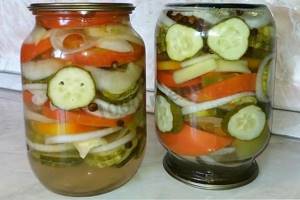
Sep-6-2017 Author: KoshkaS.
It goes without saying that the dietary properties of this salad are due to the beneficial properties of cucumbers and tomatoes.
[custom_ads_shortcode3]
Carbohydrate content in vegetables and fruits table
The table of carbohydrates in food will help determine how many grams of carbohydrates are contained in 100 g of product (for comparison, the content of proteins and fats is indicated next to it). The products in it are given in descending order of carbohydrate content. The table will help you understand how rich in carbohydrates your usual foods from your daily diet are, and make it more balanced.
The table of carbohydrates in food helps you rethink your diet. Saturate it with more healthy products and remove the excess, that which does not bring benefits, but is deposited on the waist.
Carbohydrates or hydrocarbons are the most abundant substances on earth. But depending on their chemical composition, they can take completely different forms. Therefore, their content varies greatly depending on the food source.
Cucumber:
Cucumber is a unique vegetable that does not contain any substance that can cause allergies. It is a light product, so it can be consumed in almost unlimited quantities without fear of weight gain. Cucumber satisfies hunger well because, due to its volume, it stretches the walls of the stomach, which causes a feeling of fullness.
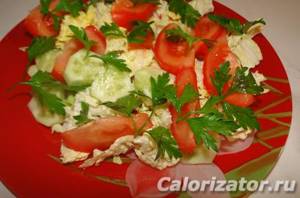
Cucumbers contain 95% water, which means that they perfectly cleanse the kidneys, do not overload the pancreas and are a natural adsorbent that neutralizes harmful substances. Therefore, they are recommended to be used for poisoning, as well as for the purpose of cleansing and healing the body.
Cucumber juice dissolves stones in the gall bladder and bile ducts. But here you need to be careful. When drinking a large amount of juice, the movement of stones may begin, which causes complications of various types.
Cucumbers owe much of their cleansing properties to potassium and sodium ions. There is much more of the former in the composition than the latter, which provides a mild diuretic effect.
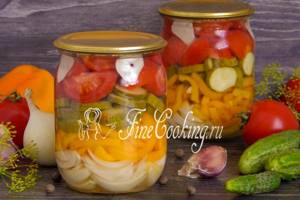
Cucumbers are rich in fiber, which helps cleanse the intestines during stool retention. The potassium content makes them a must-have product for people suffering from diseases of the cardiovascular system (in particular, those in which edema appears in patients).
Cucumbers contain ascorbic acid, B vitamins, and minerals (iron, phosphorus and calcium). Traditional medicine recommends them as a general tonic for upper respiratory tract catarrh and tuberculosis.
Cucumber improves protein absorption, so it is a good addition to meat and fish dishes. This vegetable is an excellent means of preventing thyroid diseases, since 100 g of cucumbers contains 3 mcg of iodine, which is almost completely absorbed by the body.

Daily consumption of cucumbers is recommended for people with slow metabolism. They contain folic acid, which helps reduce appetite, as it contains an insulin-like substance. For the same reason, cucumbers normalize blood sugar levels and prevent the process of converting carbohydrates into fats.
[custom_ads_shortcode1]
Top 10 Recommended Vegetables on Low Carb and Keto Diets

Below is a list of vegetables that can be included in the menu on a keto diet. They are high in important nutrients but low in carbohydrates. We tried to arrange them in descending order according to their benefits and ease of preparation. All numbers indicate the percentage of content in 100 g.
- Cauliflower – 3 g. It is the main ingredient for cabbage rice (chopped) and cabbage puree.
- Cabbage - 3g Who doesn't like sautéed green cabbage or stir-fried Asian cabbage?
- Avocado – 2 g. Avocado is rich in vegetable fats. Basically, it is a fruit, but some people classify it equally as a vegetable. Avocados can be eaten in a variety of ways on keto: raw, in a salad, or in guacamole. There are other interesting avocado dishes.
- Broccoli (scallops) – 4 g. Broccoli on a keto diet is a wonderful substitute for rice, pasta or potatoes. You can simply fry it in oil or add cheese for a richer taste. Broccoli is great for making low-carb salads.
- Zucchini (zucchini) – 3 g. A large number of healthy and tasty dishes can be prepared from zucchini on keto. They can be used to make low-carb pasta.
- Spinach – 1 g. Spinach can be cooked in a variety of ways. It goes great with eggs. Try our spinach frittata recipe.
- Asparagus – 2 g Asparagus is very popular in both cooking and medicine (where it is used as an aphrodisiac). Known since ancient times (in Greece, Egypt and Rome), asparagus has been cultivated since ancient times. Nutritious and delicious! Try it in combination with grilled prosciutto or as part of other delicious dishes.
- Kale (curly cabbage) - 3 g. Tougher and less watery, but just as nutritious as spinach. Kale is prepared by grinding, frying and baking it. Finely chopped, it is an excellent substitute for noodles.
- Green beans – 4 g. Chopped keto green beans can be added to the salad. There are other bean dishes with the addition of various fats (olive oil, vegetable oil, bacon).
- Brussels sprouts – 5 g. Spicy, hearty and nutritious, they are especially delicious when roasted with olive oil and garlic or bacon. It can be steamed with cheese sauce.
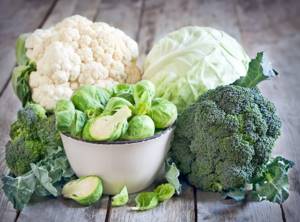
Tomato:
No one doubts the excellent taste of tomatoes. However, their advantages are not limited to this. They contain a large number of substances beneficial to the body, including protein, glucose, fructose, sucrose, mineral salts and carotene.
Without exaggeration, the tomato can be called a record holder among vegetables for the content of iron salts. Malic and citric acids, which are part of tomatoes, help increase appetite, proper functioning of the stomach, and also suppress the activity of pathogenic bacteria in the intestines.
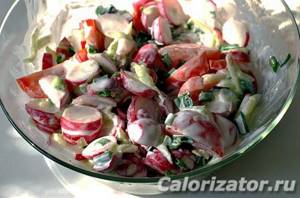
No less useful is tomato juice, 250 ml of which contains 1 mg of carotene, which is converted into vitamin A in the human body. People who regularly consume tomatoes in summer and autumn will feel better in winter and spring than those who do not.
There is a simple way to determine whether the body has enough vitamin A. To do this, you need to enter a dark room from a light room and calculate how long it takes your eyes to get used to the darkness. If it takes more than 6 seconds, then the body is deficient in vitamin A.
Tomatoes are rich in vitamins B1, B2, B6, C, PP, K, folic and pantothenic acids, biotin, inositol. They are recommended for dietary and baby food. Tomatoes are indispensable for obesity, salt metabolism disorders, diseases of the cardiovascular system and gastrointestinal tract.
An important property of tomatoes is that they contain a powerful antioxidant - lycopene, which helps in the treatment of many diseases. By preventing DNA mutation, it protects the body from cancer and delays the process of cancer cell division. It should be borne in mind that this substance is well absorbed in combination with fats, so tomatoes are especially useful with vegetable oil.
Tomatoes should be present in the diet of people at risk for cardiovascular diseases, as lycopene prevents their development. Tomatoes are also useful for those who are susceptible to depression. Numerous studies have shown that their regular use has a beneficial effect on the activity of the central nervous system, promotes good mood and vigor. The phytoncides contained in this vegetable have antibacterial and anti-inflammatory effects.
[custom_ads_shortcode2]
How many calories are in a cucumber and tomato salad?
The calorie content is especially affected by the dressing. Cucumber and tomato salad served with vegetable sunflower or olive oil, sour cream or mayonnaise. The dish seasoned with mayonnaise will have the highest calorie content, regardless of whether you chose the dietary version of the salad or the most ordinary one.
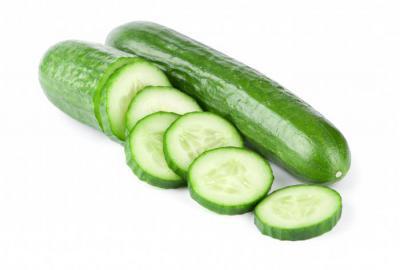
So: The calorie content of a salad of cucumbers, tomatoes and vegetable oil is:
[custom_ads_shortcode3]
Cucumber and tomato salad:
Wash cucumbers, tomatoes, apples thoroughly. Cut the peeled cucumbers into cubes. Wash the peeled onion, cut into strips and feathers.
Cut the apples into small ones and the tomatoes into large cubes. Mix all products with vegetable oil, season with salt and sugar to taste. Place the salad on a plate on green lettuce leaves.
Ingredients: fresh cucumbers - 250 g, tomatoes - 200 g, apple - 1 pc. , onions - 1 pc. , chopped green onions - 1 tbsp.
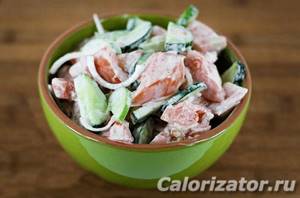
spoon, vegetable oil - 3 tbsp. spoons, salt, sugar.
[custom_ads_shortcode3]
Fresh vegetable salad with eggs:
Lettuce – 200 g, tomatoes – 200 g, cucumbers – 100 g, egg – 2 pcs., vegetable oil – 40 g, leek (white part) – 1 g, lemon juice, black pepper, salt.
Prepare a dressing from vegetable oil, lemon juice, black pepper, adding salt to taste. Coarsely chop the washed and peeled green salad, cut the tomatoes into slices, and the cucumber (unpeeled) into slices. Cut the eggs into quarters. Mix the prepared products, season with the prepared dressing and stir well, garnishing with finely chopped leeks.
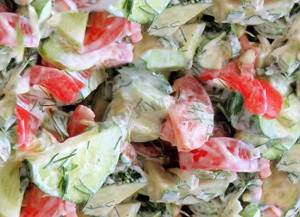
Serve the salad immediately after preparing it.
[custom_ads_shortcode1]
